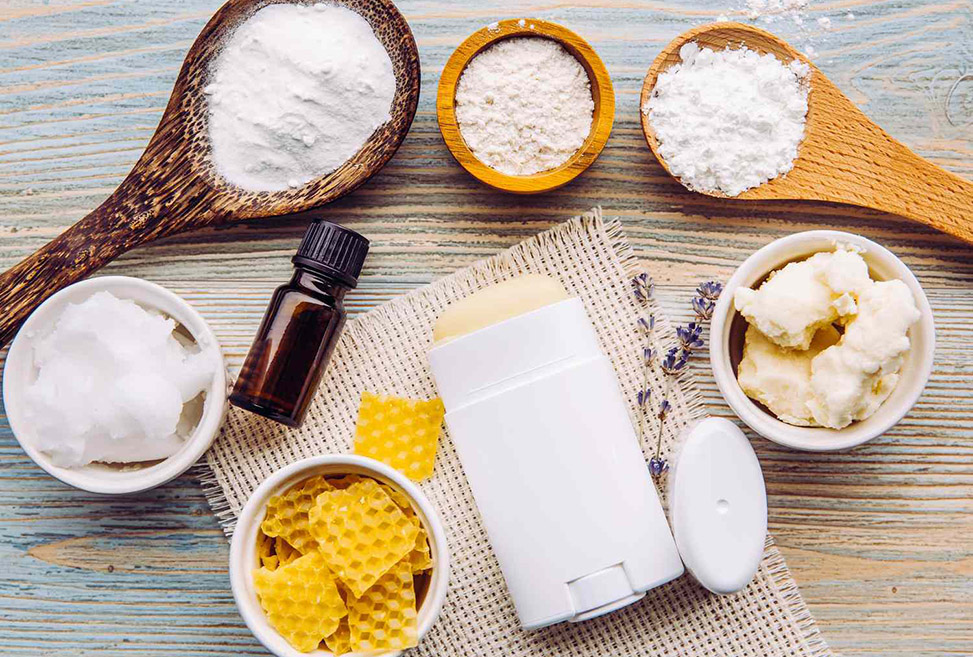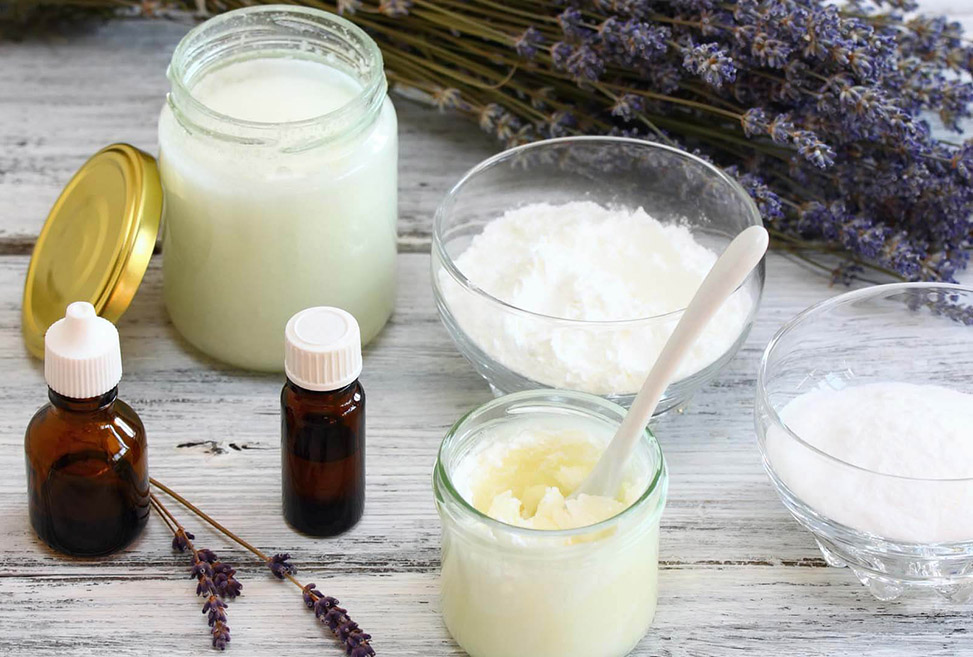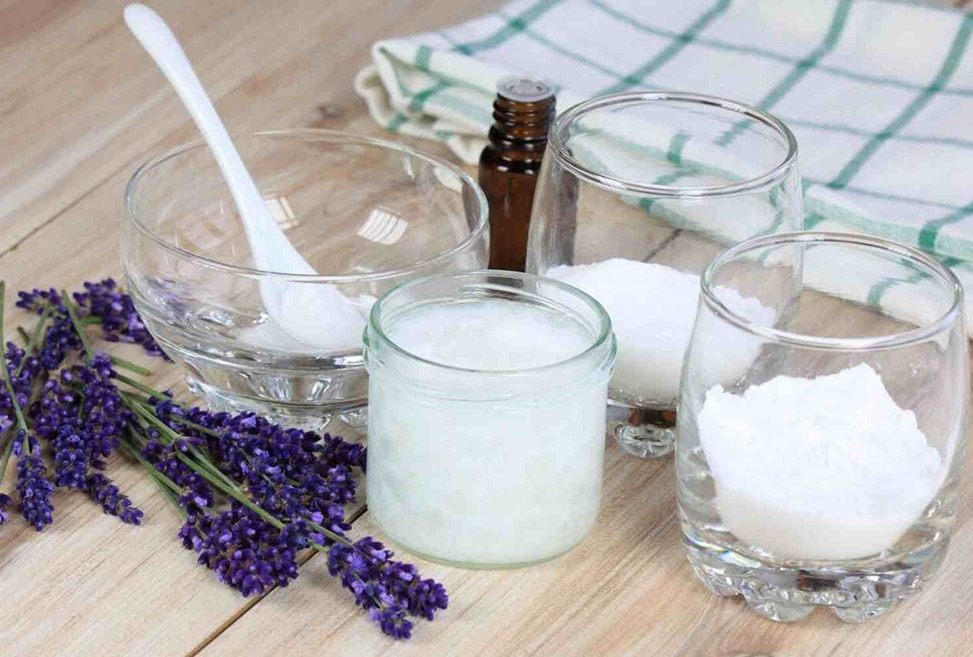
In today’s world, many are turning to natural and eco-friendly alternatives for personal care products. Homemade deodorant stands out as a prime choice for those wishing to avoid the chemicals commonly found in conventional deodorants. Not only is it a natural option, but it can also be tailored to meet your specific skin needs for optimal effectiveness. This guide will walk you through how to start making your own natural deodorant and provide detailed recipes suited to various skin types.
Getting Started with Homemade Deodorant
Transitioning to homemade deodorant involves understanding its fundamental properties. Natural deodorants work by neutralizing body odors and absorbing moisture with ingredients like baking soda, cornstarch, and essential oils. Here’s a breakdown of what you need to know:
- How They Work: Natural deodorants do not stop sweating but control odor by neutralizing the bacteria that cause it. Baking soda, for instance, neutralizes acids that can lead to unpleasant smells. Cornstarch helps absorb excess moisture.
- Customization: You can modify your deodorant to address specific needs. For instance, add extra moisturizing ingredients for dry skin or soothing oils for sensitive skin. It’s essential to choose ingredients based on your skin type and any specific concerns you might have.
- Benefits: Homemade deodorants are free from synthetic chemicals and artificial fragrances, which can be irritating for some people. They also often come in eco-friendly packaging and reduce plastic waste.
Essential Ingredients for Homemade Deodorant
Before you begin making your homemade deodorant, ensure you have the following basic ingredients:
- Baking Soda: Known for its odor-neutralizing properties, baking soda balances pH levels and helps control body odor. Its mild abrasive nature also aids in gently exfoliating the skin.
- Cornstarch: This ingredient absorbs moisture effectively, helping to keep your underarms dry. It also has a smooth texture, which helps in creating a creamy consistency in your deodorant.
- Essential Oils: These oils provide both fragrance and functional benefits. Essential oils like tea tree and eucalyptus have antibacterial properties, while others like lavender and chamomile offer soothing effects. Choose oils based on their properties and the scent you prefer.
- Vegetable Oil: Oils like coconut, almond, or jojoba provide hydration and create a smooth texture. Coconut oil, in particular, has natural antibacterial properties, enhancing the deodorant’s effectiveness.
Homemade Deodorant Recipes for Sensitive Skin
For those with sensitive skin, it’s crucial to use soothing and non-irritating ingredients. Here’s a recipe designed to be gentle yet effective:
Ingredients:
- 3 tablespoons of coconut oil
- 2 tablespoons of baking soda
- 2 tablespoons of cornstarch
- 10 drops of lavender essential oil
Instructions:
- Melt the Coconut Oil: Use a double boiler to melt the coconut oil until it turns liquid. This helps in combining it smoothly with the other ingredients.
- Mix in Baking Soda and Cornstarch: Once melted, add baking soda and cornstarch to the coconut oil. Stir thoroughly to ensure an even consistency without lumps.
- Add Essential Oil: Incorporate the lavender essential oil, which will add a calming fragrance and additional skin-soothing properties.
- Transfer and Cool: Pour the mixture into a clean glass jar or tin. Let it cool and solidify before use.
Additional Tips:
- Patch Test: Always perform a patch test before full application to ensure there’s no allergic reaction.
- Storage: Store in a cool place to prevent melting, especially in warmer climates.
Homemade Deodorant Recipes for Dry Skin
If you have dry skin, incorporating extra moisturizing ingredients into your deodorant can help keep your skin hydrated and comfortable. Try this recipe designed for dry skin:
Ingredients:
- 2 tablespoons of shea butter
- 2 tablespoons of jojoba oil
- 2 tablespoons of baking soda
- 1 tablespoon of cornstarch
- 10 drops of geranium essential oil

Instructions:
- Melt Shea Butter: Melt shea butter using a double boiler until it becomes liquid. Shea butter is rich in vitamins and fatty acids, which are great for moisturizing dry skin.
- Combine Ingredients: Add jojoba oil, baking soda, and cornstarch. Jojoba oil mimics the skin’s natural oils, helping to keep it hydrated and soft.
- Incorporate Essential Oil: Add the geranium essential oil, which balances skin and adds a pleasant, floral scent.
- Pour and Set: Pour the mixture into a jar and allow it to set until firm.
Additional Tips:
- Hydration Boost: For extra hydration, consider adding a few drops of vitamin E oil, which is known for its skin-nourishing properties.
- Usage: Apply a thin layer to clean, dry skin to avoid any potential irritation.
Homemade Deodorant Recipes for Oily Skin
For oily skin, it’s beneficial to use ingredients that help control excess oil and absorb moisture. Here’s a recipe perfect for oily skin types:
Ingredients:
- 3 tablespoons of baking soda
- 2 tablespoons of cornstarch
- 1 tablespoon of green clay (bentonite clay)
- 10 drops of lemon essential oil
Instructions:
- Combine Dry Ingredients: Mix baking soda, cornstarch, and green clay in a bowl. Green clay helps absorb excess oil and has a detoxifying effect.
- Add Essential Oil: Stir in the lemon essential oil, which has astringent properties that help regulate oil production.
- Transfer and Use: Place the mixture in a clean jar and use a small amount each day.
Additional Tips:
- Application: Apply after a shower to clean, dry skin to enhance effectiveness.
- Customizations: You can also experiment with other clay types, such as kaolin, which is gentler and still effective for oily skin.

Tips for Using Homemade Deodorant
- Application: Apply deodorant to clean, dry skin. A small amount is typically sufficient. Make sure to let it absorb completely before dressing to prevent any transfer to clothing.
- Storage: Keep your homemade deodorant in a cool, dry place. If you live in a warmer climate, consider storing it in the refrigerator to maintain its consistency and effectiveness.
- Customization: Feel free to adjust the recipes based on your preferences and needs. You can experiment with different essential oils or add additional ingredients like vitamin E for extra skin benefits.
With these homemade deodorant recipes tailored to different skin types, you can embrace a natural and personalized approach to body care. Say goodbye to conventional deodorants full of synthetic chemicals and opt for a more eco-friendly and skin-friendly alternative. Enjoy experimenting with these recipes and discover the perfect combination that works for you!
Taking small, mindful steps in our personal care routines can contribute to a healthier lifestyle and a more sustainable planet. By choosing homemade, natural products, you’re making a positive impact on both your skin and the environment.


